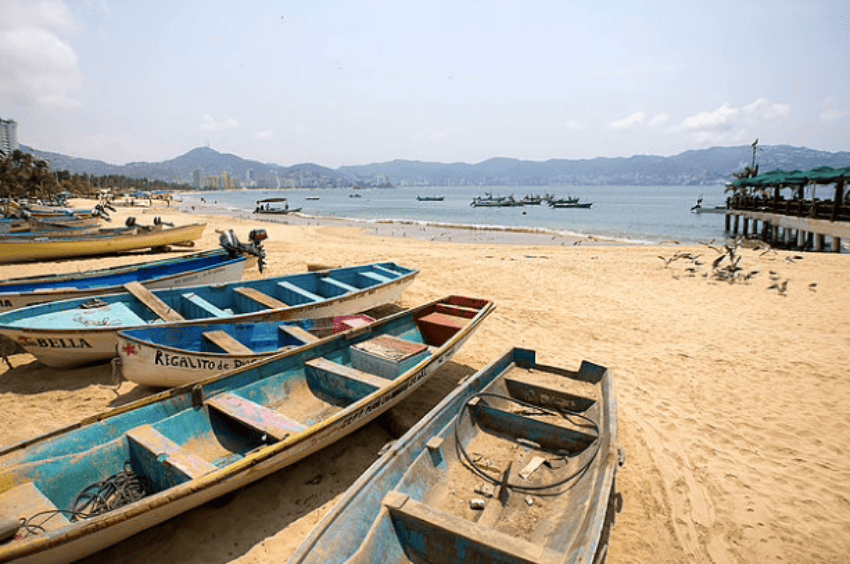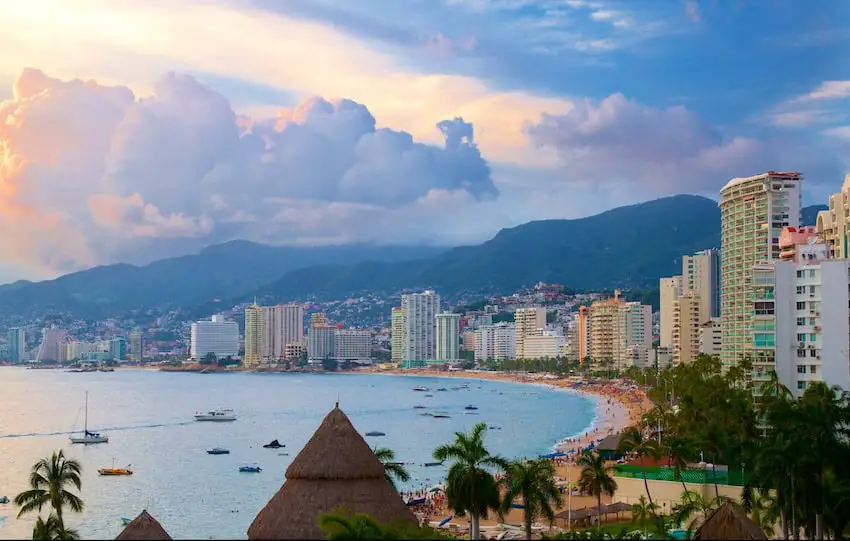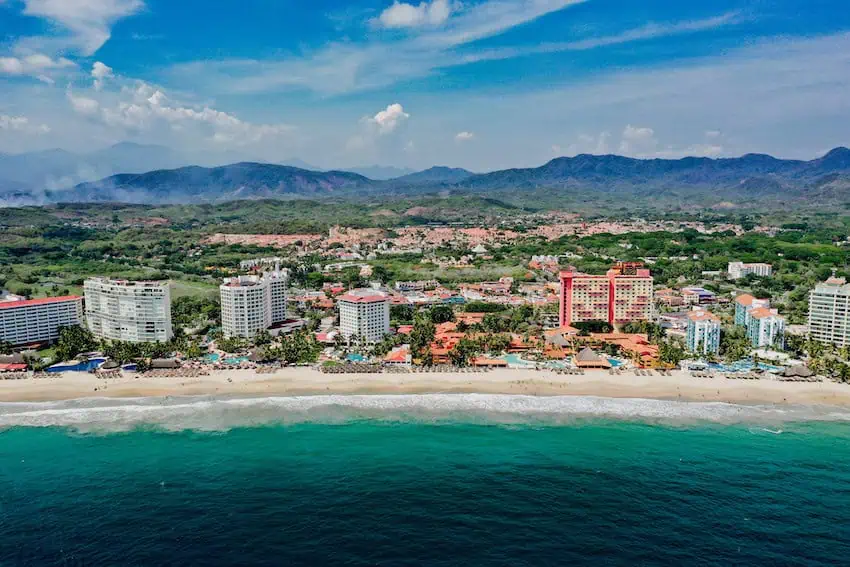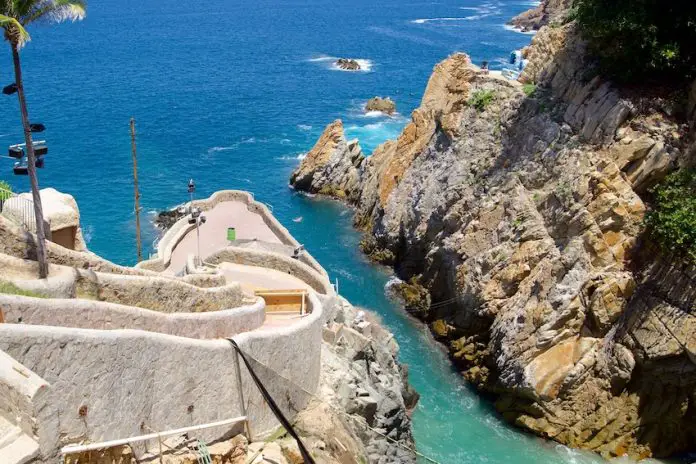Once upon a time, vacationers to Mexico patronized a string of Pacific destinations, each with its own personality and vibe. Collectively known as the Mexican Riviera, five places garnered nearly all of Mexico’s international tourism receipts: Mazatlán, Puerto Vallarta, Manzanillo, Ixtapa-Zihuatanejo and Acapulco. Daily nonstop flights from the Western U.S. and Canada filled these places with beach-starved, beer-guzzling northerners who came for the trappings of the classic Mexican beach vacation: golden sand, blue waters, beach vendors, parasailing, seafood and — maybe — an outing to get some “culture.” It’s here that we make our latest stop in the MND Where to Live in Mexico Guide 2024, with a look at our Mid-Pacific trio.
All-inclusive resorts were not the thing — with the exceptions of Club Maeva and Club Med — and a vengeful Montezuma lurked behind every salad bar or street food stall. People were out and about, shopping and dining were robust enterprises and visitors collected Pacific Mexican destinations like badges, hopping down year after year, remembering their favorite bartenders, bellboys and waiters. It was, in some ways, a time of tourism’s infancy and innocence. Few big corporate lodging players were in the space, Mexicana de Aviación ruled the skies and the Tourism Ministry and Fonatur poured mountains of pesos into marketing and advertising.

The resulting success slathered upon the Mexican Riviera begat the emergence of two new poles of development, Baja Sur and Quintana Roo, which would come to eclipse and leave in their wake a trio of once-renowned destinations that most vacationers today would be hard pressed to find on the map.
With Mexico’s “open skies” bilateral agreement bringing new international air routes and carriers, the band wagon moved on and left Colima and Guerrero with a bad hangover and an almost total disappearance of airline support. The resulting “domestication” of tourism — aided by new highways from the highland to the coast — recast these places in ways you might find a refreshing twist on beach living: a truer, “real Mexico” experience.
Acapulco

It’s fitting to start where it all began. No other resort city in the Western hemisphere has lived the triumph and tragedy of a tourism town’s lifespan as dramatically as Acapulco. From inventing our concept of a beach vacation in the 1930s with discos, swim-up bars and cliff diving to a crescendo of celebrities in the 1950 through to the 1970s and a long slope off to obscurity in the following decades, Acapulco has seen it all.
As the airlines stopped flying here and cruises found new ports, the 1993 opening of the Autopista del Sol highway shortened travel time from Mexico City, and Acapulco lost its jet-set cachet. Waves of domestic tourists reclaimed the Bay as the quintessentially Mexican place to play, party and be seen. Arriving too were waves of narco violence, Mexican military taking to the streets, devastating hurricanes in 1997 and 2023 and falling resort investment.
It’s still a remarkable natural setting and one of the world’s most beautiful natural harbors. The very urban resort area is divided into three parts: the west end of the bay and beyond is the traditional area of beach coves, marina, cliff-divers and original hotels; the main part of the bay known as the Zona Dorada, the site of fine beaches, high rises and hillside homes, where the rich and famous were once seen; and down the coast, Diamante, which lies outside the main bay and close to the airport, hosting golf courses, an events center and long flat beaches.
While locals are still recovering from Hurricane Otis, living here as a foreigner can bring nostalgia to the nouvelle: “old” Acapulco has scenic bay views, 1950s architecture and a semblance of neighborhood. Most anyone else with the grit and determination to live here as a foreigner has likely given up on the Bay and found a paradise of golf, box stores and a less urban pace in the Diamante area. You’ll be surrounded by Mexicans who love Acapulco for what it has become: an escape from Mexico City for big concerts, sporting events and nightclubs.
Ixtapa-Zihuatanejo

Up the coast is Ixtapa-Zihuatanejo, “the one place that’s two places at once,” as the promo slogan of the past century recounts. Living here is pitch-perfect for foreigners wanting two side-by-side settings: the modern” resort of Ixtapa — built from nothing in the 1970s around a marina and fine golf course with all high-rise hotels— and, just a short 10 minutes away, Zihuantanejo, one of Mexico’s most picturesque coastal towns. Put these two together and this duo can be your quiet, affordable and well-heeled beach living option: nothing too fancy, and a tempo driven by weekend visitors coming from Mexico’s central highlands via a modern toll road. Although you really don’t need a car living here, this highway also gives residents a quick way to escape for visits to cultural magic in places like Michoacán and Guanajuato.
Only 14,000 people live in Ixtapa, complimented by a small but loyal snowbird flock who drop in from October to March. It’s beach living: open ocean surf and waves with a smattering of retail. Zihuatanejo is a burgeoning town — population 130,000 — of cobblestone streets around hill-backed bays. Though occupied for centuries, there are no historic buildings and only a single museum. Hardly the village it once was, it’s still familial and friendly. Locals lament some street and narco crime boil-overs and residents adapt to the change that’s coming: some fast food, box stores, traffic and strained city services. Rentals are cheap: low season two-bedroom condos start at US $400 per month, and ocean view units can go as little as $600 a month. Expect to pay more — and find fewer options — from November through March.
You can, of course, volunteer, take classes at the Casa de la Cultura, become a watersports aficionado, take part in the excellent fishing or learn to shop a lo mexicano at daily tianguis options or a Saturday organic market. Playa la Ropa and Playa Las Gatas are two marvelous beach hang-outs. As one blogger puts it, “Ixtapa is the beach vacation. Zihuantanejo is Mexico.”
Manzanillo

The industrial port city of Manzanillo, up the coast in Colima state, is for the heartiest of Mexico beach lovers. It won’t lure you with amenities commonly found in other Pacific Mexico locations. You’ll be hard-pressed to find year-round social connections with either foreigners — most of whom return north after March — or Mexicans, unless your Spanish is quite good and you live in a non-resort residential setting. The city’s commercial-port-first personality drives how most Mexican residents live and work. Multicultural neighborhoods include Club Santiago and the Las Hadas area.
You may find a truer calling up the coast of Colima and southern Jalisco, in places like Barra de Navidad, Melaque and La Manzanilla, all more rustic settings with quieter coastal living. Manzanillo earns our lowest year-round rating — sorry, Fred. It’s inexpensive, yes. But finding purposeful living will take some imagination.
Speaking of imagination, the place that put Manzanillo on the tourism map is the singularly unique resort hotel, Las Hadas. It was once the hedonistic mothership for Hollywood royalty and private jet escapes in the 1970s and ’80s. Its whimsical, Mediterranean and Arabic-inspired architecture, themed suites, micro-spaces and bayfront setting are still standing. The movie “10” was filmed here. A generation ago, Las Hadas was Mexico’s leading pleasure palace.
During a time before the Baja California and Yucatán peninsulas rose to resort stardom, Colima and Guerrero were on the short list of Mexico getaways. But the bandwagon moved on, leaving heartier, beach-loving expat with this trio of once’famous places. Today, they’re all still here, without their reputations or almost any air connectivity, but looking forward to a new — if somewhat faded — future.
The ratings
A full breakdown of our rating system can be found here.
![]()
What did we get right? What do you disagree with? Let us know in the comments.
You can see more of our Where to Live in Mexico 2024 series here, including ratings for Yucatán, Oaxaca, Quintana Roo, the Baja California peninsula, Jalisco, Pacific trio of beachside cities and three major Bajío metropolitan areas.
Author Greg Custer lives in Mexico. He’s worked for over 40 years in international tourism, educating travel advisors around the world about Mexico and other Latin American destinations. He helps folks explore Mexico for living at www.mexicoforliving.com.
